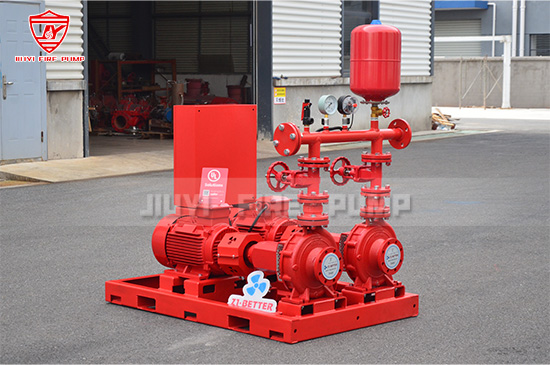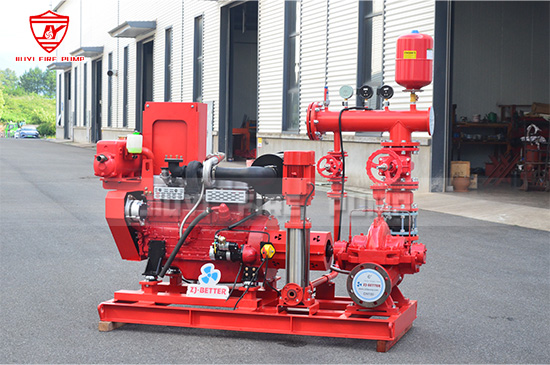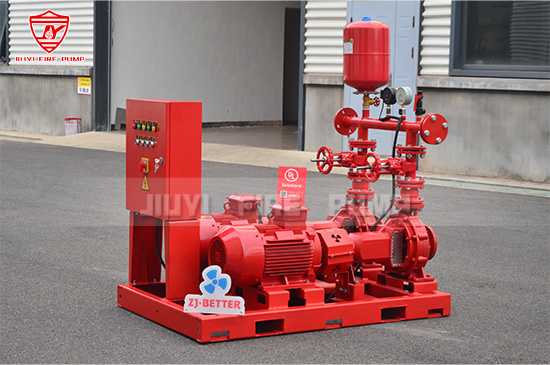Fire pumps are crucial components in any fire protection system, providing the necessary pressure and flow of water during emergencies. Regular maintenance is essential to keep these systems functioning properly, ensuring they meet local regulations and standards. Whether you are managing fire pump systems for commercial, industrial, or residential use, understanding how to properly maintain fire pumps can help prevent malfunctions when they are needed most.
This comprehensive guide covers the best practices for fire pump maintenance, common issues, and how to extend the life of your fire pump system.

A fire pump is a mechanical device, and like any other piece of equipment, it requires regular care to remain efficient and effective. Failing to maintain a fire pump can lead to:
Increased Risk of Failure: A poorly maintained pump might not deliver the necessary pressure or flow during an emergency, putting lives and property at risk.
Non-compliance with Standards: Fire pumps must meet specific local and international standards (e.g., NFPA 20 in the U.S., EN12845 in Europe). Lack of maintenance can lead to non-compliance, resulting in fines or increased liability.
Expensive Repairs: Over time, neglected pumps may require costly repairs or even replacement. Regular maintenance helps avoid unnecessary expenses.
Shortened Lifespan: Consistent care increases the lifespan of a fire pump, ensuring it continues to perform reliably when needed.
Checking the condition of the pump itself is the first step in maintaining its efficiency. Look for any visible signs of wear, cracks, or leaks that could signal an issue. Also, verify that the pump is free of debris, dust, and dirt, which can obstruct airflow and cause overheating.
Motor Inspection: For electric pumps, check the motor’s insulation, connections, and ventilation. For diesel engine pumps, ensure that the fuel system is functioning correctly and there are no fuel leaks.
Pump Shaft and Bearings: Inspect the pump shaft and bearings for wear or damage. If they’re misaligned or damaged, it can lead to mechanical failures.
The performance of a fire pump needs to be tested periodically to ensure it is operating correctly. The National Fire Protection Association (NFPA) recommends conducting a test once a month.
Flow Test: Run a flow test to ensure the pump is delivering the correct flow and pressure. The test should measure how much water the pump can move in a specified time.
Alarm Test: Ensure the pump’s alarm system is functional. It should notify operators in case of any faults, low fuel, or pressure problems.

Fire pump engines, especially diesel-powered ones, require routine oil changes to function correctly. Regular oil changes prevent the engine from overheating and reduce the risk of mechanical failure.
Diesel Engines: Change the engine oil every 250 hours or according to the manufacturer’s guidelines. Always use the appropriate oil grade to ensure optimal engine performance.
Coolant Levels: Check the coolant levels regularly, especially in diesel-powered fire pumps. Low coolant levels can cause overheating and significant damage.
For electric fire pumps, ensure the battery is fully charged and in good condition. For diesel fire pumps, check fuel levels, filters, and injectors to ensure the system is ready to perform when needed.
Battery Maintenance: Clean the battery terminals and check for corrosion. Test the charge and voltage to make sure the battery will hold enough charge to operate the fire pump.
Fuel System: For diesel engines, inspect the fuel filters for blockages and replace them if necessary. Regularly check the fuel tank for sediment or contamination that could clog the fuel system.
Lubrication reduces friction, wear, and heat, helping to keep the pump running smoothly. Check the pump manufacturer’s recommendations for the appropriate lubrication schedule and use the right type of lubricant for different components like bearings and valves.
The suction and discharge valves play an essential role in maintaining proper pressure. Check for leaks, corrosion, and any blockages that may prevent these valves from functioning properly.
Suction Valve: Ensure the suction valve is clean and free of debris. Any obstruction can prevent the pump from drawing water effectively.
Discharge Valve: Make sure the discharge valve is fully functional and free of leaks, as improper sealing can lead to a drop in pressure.
The pressure relief valve is a critical safety feature designed to prevent the system from over-pressurizing. Inspect the valve for correct operation and check that it is not stuck or leaking.
Inspect the system’s piping and connections to ensure there are no leaks or loose fittings. Any leaking or weakened joints can reduce pump efficiency and may cause extensive damage over time.
Pump to Piping: Check that the pipe connections are tight and the seals are intact to prevent any leaks.
Valve and Pump Interface: Ensure that the valves are secure and that the connections are functioning as designed.
Clean the pump system regularly, removing debris that could block air vents, fuel lines, or intake areas. For horizontal pumps, ensure that any standing water is drained to prevent rusting or corrosion.
Fire pumps often have emergency shutdown or bypass systems to ensure the system continues to work if the primary pump fails. Test these emergency systems at least once a year to ensure they are functioning.

Even with regular maintenance, fire pumps can sometimes experience problems. Knowing how to troubleshoot these issues can save time and money.
No Water Flow: If the pump is not delivering water, check the suction line for clogs, ensure the valve is open, and verify that the impeller is not damaged.
Low Pressure: Low pressure could be due to air trapped in the system, clogged filters, or a malfunctioning pressure relief valve.
Overheating Engine: If the pump is overheating, check the coolant levels, inspect the radiator, and clean the vents to improve airflow.
While basic maintenance can be handled in-house, complex tasks such as full system diagnostics, impeller replacement, and engine overhauls should be performed by certified professionals. Consider scheduling a professional inspection at least once a year to ensure that all components are in top condition.
Proper maintenance is essential to ensuring the reliability and longevity of your fire pump system. Regular inspections, fluid changes, cleaning, and system testing will keep your pump operating at peak efficiency, providing vital protection in the event of a fire. By following the above maintenance guidelines, you can extend the life of your fire pump, prevent costly repairs, and ensure compliance with fire safety standards.
By taking proactive steps to maintain your fire pump system, you not only protect the integrity of your equipment but also the safety of your property and the people within it.